Blue ocean strategy for the hotel industry: A way to carve out new market

The idea of the Blue Ocean strategy comes from Harvard press’ bestseller book, Blue Ocean Strategy – How to create uncontested markets and make the competition irrelevant, written by Kim and Renee Mauborgne. The authors believe with BOS, you can “Discover a new way of thinking that allows you to break away from the pack while simultaneously reducing your costs, setting you on the path to profitable growth.” What is an uncontested market? The Blue ocean’s strategy is all about creating an uncontested market. What defines an uncontested market, then? It’s basically creating a market by capturing demand for the things that already exist, but no one in your competition is offering products or services to leverage that demand. Once you do, you have almost a monopoly on that domain. Even if someone tries to imitate you, you will be so far ahead in solving that problem that there will be a negligible contest between you and your competition. However, the question erupts here – Can you create uncontested markets in the hotel industry? Where there are already too many players competing in the same market space. The answer to it is yes. CitizenM, a hotel chain, used one of the tools (ERRC) of the strategy to carve out an uncontested market for themselves. As we advance in this article, we will discuss the tools and implementation strategy. But before that, let’s clear the basics first and understand the core principle of the strategy. What is the blue ocean strategy? Ocean and the blue Ocean strategy is a metaphor that depicts the prevalent business environment, which in our case, is the hotel industry. The authors of the Blue Ocean strategy divide business environments into two sections. First is the conventional business environment; they call it the red ocean. Then there is this Blue Ocean, which is uncontested where there is no competition. The essential characteristic of a red ocean is that it is a known marketplace. In this case, all the individual hotels and hotel chains would be a part of this marketplace and compete against each other. The fallout of the red ocean is the fact that there is extremely little space for everyone. The margins are less. And the scope to get a competitive advantage is very thin. On the contrary, there is no competition in the blue ocean. You are the one who sets the rules of the game. It is your playbook. The term ocean denotes the depth of unexplored market space. The deeper you go, the better the benefits you yield. So, it was the subjective part of the thought or philosophy. But it is not just a thought. The authors give you tools to employ this strategy and benefit from it. Next, we will discuss those tools and their implementation in the hotel industry. How to employ the blue ocean strategy in the hotel industry? The creators of the blue ocean strategy, Kim and Mauborgne put together over 20 tools to employ the blue ocean strategy in businesses and leadership; you don’t need all those tools to create a blue ocean in the hotel industry. You need only two – the ERRC Grid and Strategy Canvas. Let’s first understand these tools, then further explore how you can use them to create a blue ocean – no competition zone in the hotel business. ERRC Grid ERRC stands for eliminate – reduce – raise – create Grid. The principal thought behind ERRC Grid is as simple as its expansion says. Let’s put it into a broader perspective concerning the hotel industry. Eliminate what others are doing. Suppose everyone has bigger lobbies, full-service restaurants, and bars. You eliminate that aspect from your business and – Reduce focus on services that everyone else is offering. Now you – Raise the quality of services that everyone is not focusing on, like elevating the sleeping environment for guests, providing quick access to a high-speed internet connection, etc. And then, with the final block of the Grid you – Create what nobody else is creating, like KIOSK for a 2-minute self-check-in, 24/7 pantry, and bar. Or whatever value proposition you think your business has that no other entity in the hotel industry is leveraging it. That is where you can create the final block of the Grid. Strategy Canvas The strategy canvas is the extension of the ERRC tool. In the strategy canvas, all those factors that you eliminated, reduced, raised, or created through ERRC, you put them on the X-axis. In comparison, you keep all the competing elements on the Y-axis. And measure your progress on each of those offerings. The strategy canvas allows you to track the progress of the variables you decided to change in the ERRC grid. Such as, the rate of services you chose to reduce should gradually decrease. The quality of services that you decided to raise should steadily go up. If that is happening, you are certainly on the way to creating your blue ocean strategy or the market where there’s no one contesting you. Wrapping up! Every business dream of creating a monopoly in the market they operate in. So, if you can carve out a market where there is no or less competition, there’s nothing better you can do for your business. And the blue Ocean strategy leads you towards that. At the start of this article, you may have thought there’s no way you could have an uncontested market in the hotel industry, but the tools we described in the Blue Ocean strategy are definitely employable. And as we mentioned, hotel chains like CitizenM have successfully implemented it. So, why not you?
How Can IATA Travel Pass Help Countries Reopen Borders?
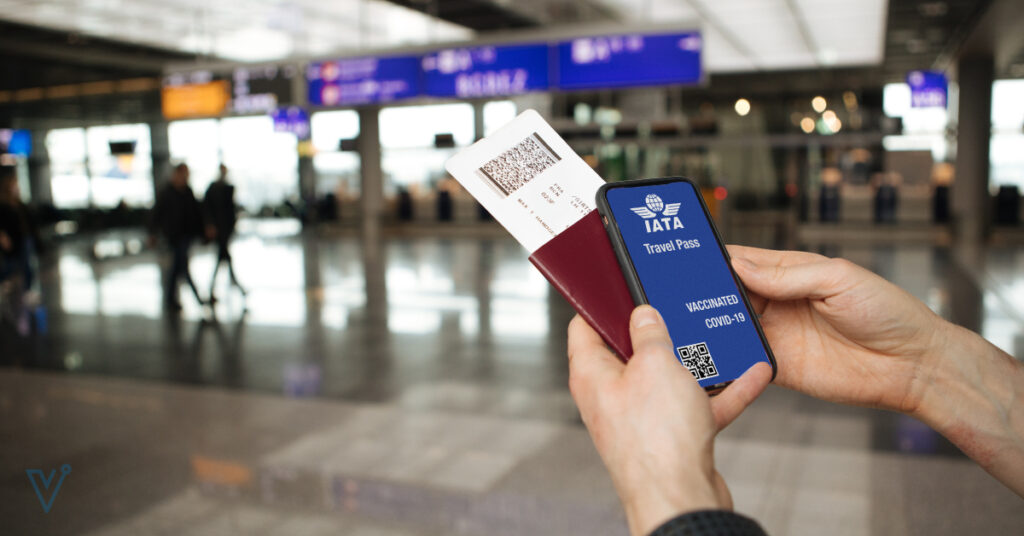
The world has not yet wholly rebounded from the social and economic impact of the pandemic. And it’s high time for countries to reopen borders with no restrictions and smoothly facilitate international travel. The International Air Transport Association IATA started an initiative called the IATA travel pass, which allows countries to confidently reopen borders without any mandatory quarantine. It’s a digital health pass, and it will be available to all nations for free. A recent press release from IATA says the development of IATA’s digital travel pass is in its final stage. As countries use testing to limit Covid-19 importation, verifying all the testing and vaccination information becomes critical. And IATA travel pass solves the same problem statement by creating an infrastructure for easy flow of information among governments, airlines, labs, and travelers. Before we get into the intricacies of how the Travel Pass will work, let’s first understand the initiative and what it aims to achieve. What is IATA Travel Pass Initiative? The primary objective of the IATA travel pass initiative is to provide a digital infrastructure to countries that allow them to re-open borders without any quarantine. The travel pass will have accurate information on passengers’ health status. And the travel pass will work on a two-way mechanism that helps both passengers and governments. For passengers, IATA Travel Pass is a mobile app where they can find all the information regarding what tests results they need to produce, where they can get the test, and methods to verify vaccination status before their travel. Also, with the IATA travel pass mobile app, passengers can directly share Covid health information with governments in a secure and discreet manner. Recommended: Five Emerging Technology Trends in Travel Industry How does IATA Travel Pass Work? As we mentioned earlier, the whole initiative of free IATA Pass revolves around providing a one-stop solution to all stakeholders that facilitate travel in the post-pandemic world. Now let’s quickly understand how the travel pass initiative helps these stakeholders at different levels. Governments Governments of the countries using the Travel Pass will get unified and authenticated data of tests, vaccination status, and the identity of travelers to confidently open borders and thoroughly scrap post-travel quarantines. Aviation Industry Airlines will get an efficient information distribution mechanism, which they can use to inform their passengers and potential travelers on test requirements. Also, verify if a passenger meets the mandatory requirement for travel. Covid-19 Test Labs IATA authorized test labs and centers will have a single source mechanism to send test reports and vaccination certificates directly to the passengers. Also, they will be to process passengers’ data confidentiality. Travelers With the help of the Travel Pass App, passengers will be able to create digital passports. And they can also verify their vaccination and test result in real-time and check if their “Digital Passports” meet the covid travel norms of their destination. Recommended: Is Bliesure the Future of Post Pandemic Business Travel? As countries with the likes of Singapore, Qatar, Malaysia, Switzerland, and 60 other nations are already using the IATA Travel Pass on a trial basis, it’s going to be a monumental tool to bring back international travel to the level pre-pandemic times.
3 Reasons Why OTAs Need Up-to-date Hotel Content on Their Platform
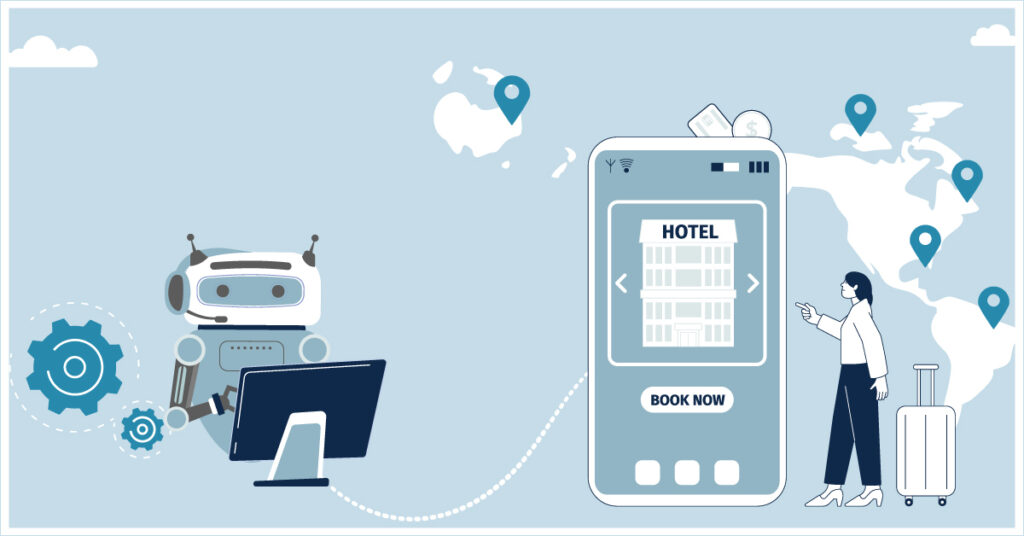
Struggling to keep your online travel business relevant in the dynamic travel industry? The ever-evolving travel industry changing consumer demands has made online travel agencies stay on top of their game. According to a research by The Business Research Company, the online travel agent market is expected to grow at a CAGR of 5.9% from 2025 and reach $1,259.1 billion in 2030. The boom of the OTA market proliferated with multiple players has made it competitive for every OTA to provide the right, relevant and updated hotel content to their consumers. Hotels are constantly changing their content, and this means that if OTAs don’t keep their content updated, they can get beaten by their competition. Let’s look at three reasons why up-to-date content is essential to OTAs and then look at how they can use hotel mapping software to keep their content updated. Who are Online Travel Agencies? OTA or Online Travel Agency plays a vital role in the hotel distribution landscape. They have a maximum presence online, selling travel-related services such as hotels, flights, car rentals, cruises, tours, and much more. These third-party sellers resell services that help consumers to research, plan and book their next trip. OTAs provide numerous choices, benefits, and offers, making them the most-preferred channel for consumers. Since 90% of consumers prefer OTAs, most hotels and accommodation providers distribute their properties on OTAs to reach a wider audience. Some of the popular OTAs are Booking.com, Expedia, Cleartrip, Skyscanner, TripAdvisor, etc. Recommended: How Travel Agencies Can Meet Customer Expectations In New Normal How Do Suppliers Work with OTAs? OTAs connect with multiple inventory sources known as suppliers. Hotel suppliers or consolidators are companies who provide an extensive database of hotel content, including hotel rates, room availability, room images, facilities, location, geocodes, etc., to various travel agents. OTAs connect their platform with the supplier’s inventory so that their visitors can book hotels directly from their website. This way, OTAs ensure to get every single hotel listed on its platform. 3 Reasons Why OTAs Need Up-to-date Content OTAs give millions of customers the option to choose the best hotel according to their needs. However, since travel suppliers work on a large scale, OTAs often miss any recent content update (addition or removal) of hotel properties. This has a significant impact on OTAs business. Here are three reasons why OTAs need updated content. However, this dynamic industry is constantly changing, and to stay relevant in the competitive market, OTAs need to provide up-to-date content to their consumers. 1. Enhanced Brand Value For OTAs to be successful, the right and latest content are fundamental. If your website has not been updated with the newest hotel content, your brand value can be impacted. For example, two new hotel properties are launched in a city, and if an OTA fails to add the properties on their platform, then they are clearly missing out on new business. This affects brand value and customer expectations. 2. Better Business Profits For an OTA, their website is the virtual store of their business. Accurate hotel data are like key objects in the display windows. It captures shoppers’ interest to engage and find out more about your website. By producing quality content, businesses can attract more traffic to their websites, leading to higher conversions rate. Citing the example in the above pointer, if OTA misses two new properties in a city, then there can be drop-in conversion rates affecting the business revenues. 3. Improves Brand Trust Delivering accurate hotel content on your platform is one of the best ways to build trust with your customers. Quality content helps your customers with the information they need and shows that you are proficient in your business area. Imagine being able to generate revenue only through your reputation. Recommended: How to Choose Hotel Mapping Services? Hotel Mapping Solution for Updated Content Technology plays a dramatic role in minimizing the negative impact of outdated content. OTAs struggling to keep up with up-to-date content can easily rely on hotel mapping solutions. Hotel Mapping is a method of aggregating hotel properties from multiple sources in an organized manner that removes duplicate listings while ensuring hotel inventory is up-to-date and accurately mapped. Hotel mapping streamlines the process of displaying available inventory and dynamic content to the customer. This lets OTAs focus on delivering a better user experience to their customers. Outdated hotel information on your platform can easily hurt your business. With multi-inventory sources and fragmented distribution channels, it is imperative to have the latest and most accurate content on your platform. If your website is struggling to attract attention from visitors, it might be time to delve deeper into your hotel content. Content plays an important role in the booking process. An OTA’s platform should answer every question by the consumer, else the booking conversion rate can quickly drop, creating a domino effect on their business.
How does metasearch marketing work? 5 tips to boost ROI
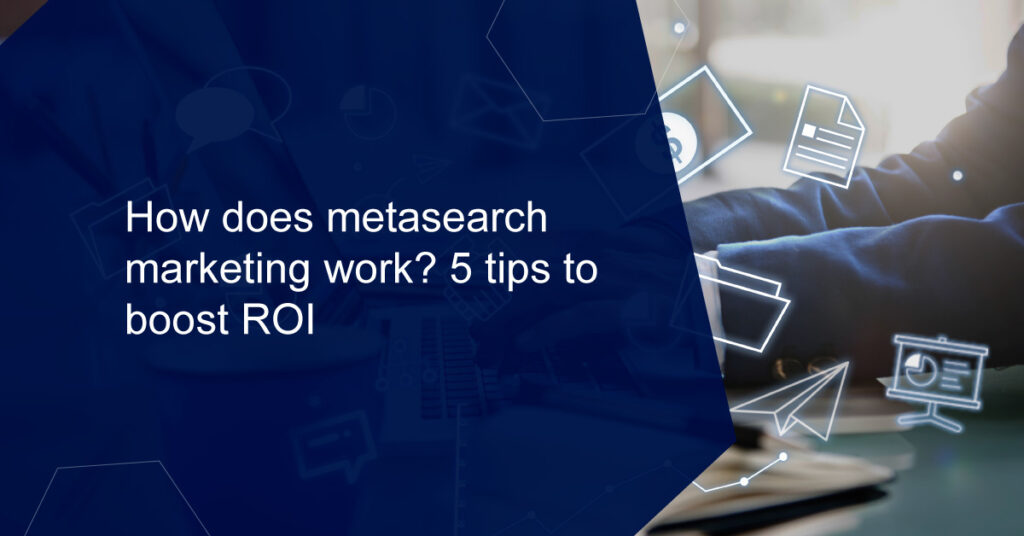
Metasearch advertising is emerging as a significant force in the hospitality industry, and if optimized effectively, it offers you both better visibility and conversions. The hotel metasearch engines offer visitors price comparisons and many alternatives against a single query on the same page. Increasingly, the engines are changing the dynamics of hotel distribution. The State of Hospitality Distribution Report by Revenue Hub finds that 94.4% of consumers use metasearch occasionally when booking their accommodation. Within this, 72.5% said they regularly used metasearch sites. All meta-search engines use different revenue models, though PPC is the most dominant. Refer to this piece, where we discussed major hotel metasearch engines and their revenue strategies. Here in this article, we will stick to metasearch marketing, explaining why it is essential for your hospitality business, and recommend ways to make the most of this channel. Why consider hotel metasearch marketing? The metasearch engines are important, and they should be a part of your distribution agency, irrespective of the nature of your business, whether you are an OTA, DMC, or TMC – as long as you offer instant bookings, you should consider leveraging these engines. Why do we say that? Because metasearch engines target a specific audience with a transactional intent, people who price shop in the travel market are always hot prospects. Also, metasearch marketing conforms with the first principle of advertising: to communicate with prospects on a platform they already are, making it easier for you to take them onto your platform for purchase. It’s more like social media marketing. If your target audience spends more time on LinkedIn, you would be better off running campaigns on LinkedIn than on Instagram, Twitter, and Facebook. All in all, it is a strong distribution that millions of travelers visit every day. And to top that, it mostly works on PPC model, so you get a level playing field. Five tips to boost ROI with metasearch advertising You have industry giants like Bookings.com and Expedia competing on Metasearch as well, but the good thing is that you can get better off them with proper strategy and planning. Here we share some recommendations to help you derive more profitable returns from travel metasearch marketing. 1. Identify the goal, and define budget First, determine what you expect from this channel and where you want to go. Once you have a clearer expectation and a penetrable goalpost, the journey to achieve digital marketing objectives becomes easier. Then, look at the financial bandwidth you can allocate to metasearch marketing and optimize your bidding strategy to your goal to derive better returns on investment. 2. Leverage Local SEO Google Hotel Ads is the market leader in the hospitality meta engines. So, just advertising on Google would not be enough, and you will also have to leverage Google’s Local SEO. There are two ways you can optimize Local SEO, first, by using branded keywords that exactly match the hotel names. Your hotel would easily rank for branded keywords unless there’s something seriously wrong with your google business profile. Second, by using non-branded keywords – these keywords are generic, like “Hotels with pool,” and have high keyword volume. If you understand your market and research well, you can gain a competitive advantage by ranking your hotels on google with non-branded keywords. 3. Narrow down your funnel For metasearch marketing, getting impressions and clicks on your ads should not be your priority because you pay per click, but you don’t gain per click. So, it would help if you narrowed down your funnel for conversion. How? Set realistic prices, display accurate locations, and, most importantly, list actual amenities; visitors must feel cheated after reaching your website. 4. Adapt to rule You have to admit all marketing channels have their own feel, and not all strategies work everywhere. You must adapt to the platform’s feel. When you talk about search engines, the first thing that catches the eye of visitors is the rate. If the rate parity is on their side, they will be interested in you. It does not mean you should offer the lowest rates all the time. You can create event-specific campaigns, such as new year, and play with volume. Or list the same hotel rooms on multiple websites to generate a rate parity and get conversions from there. 5. Be available, and embrace consistency The gap between promise and delivery might not hurt much in conventional marketing, but it hurts you most in digital marketing. Here you get instant rewards and instant setbacks. To get instant rewards, you must be available when visitors click your ad – keep your room availability updated, rates revised, and offers visible. Also, be consistent with it to keep reaping the rewards. Metasearch marketing can be a crucial ally to your hotel distribution efforts. As we mentioned in the article earlier, it’s one of those channels where travelers come with high intent to purchase. If you serve the right amount of value there, your conversions can go north – use the tips we mentioned to make your metasearch marketing efforts successful.
The New Traveler Needs
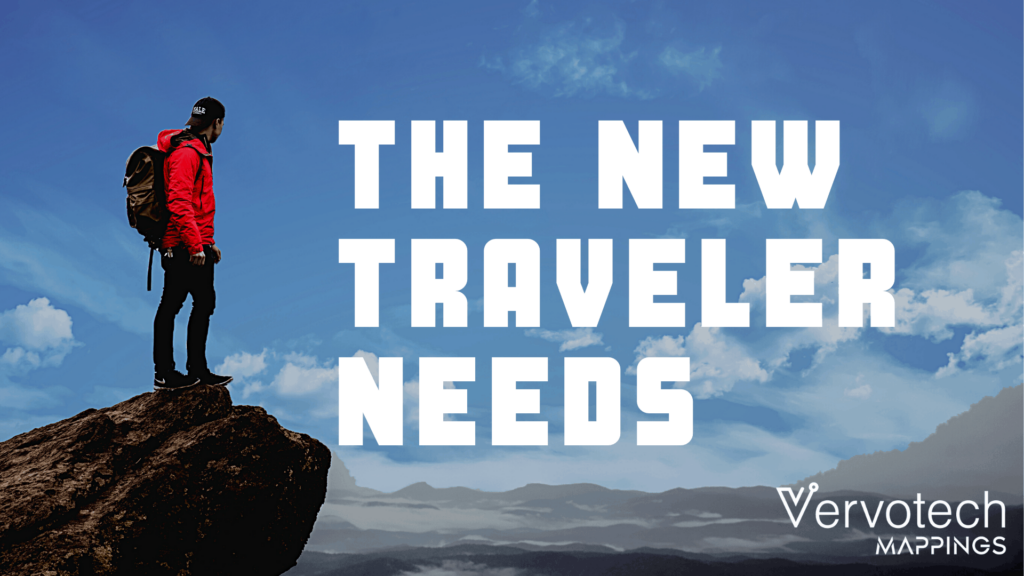
Travel and Hospitality are not only one of the most basic service industries in the world but also one of the oldest. Ever since the inception of civil thought processes, we humans have always aspired to traverse our lands beyond the horizon no matter the challenges or the risks involved in the same. This is perhaps the greatest achievement of human beings as a race – being able to leave a mark on the lands that they set their foot on may it be the most distant islands, the highest mountains or the moon. It is necessary for the Travel and hospitality industry to look after modern travelers needs. Therefore, it’s safe to say that travel and hospitality will always be one of the core industries that influences all other spheres of human intervention. Fast forward to the 21st century, rapid developments in communication technology has enabled the world to come together in a manner that was quite unprecedented before. The farthest corners of the Earth have opened up as potential destinations due to the emergence of new markets and communities. With modern travelers having far more diverse needs than that of our ancestral counterparts, the travel and hospitality industry must be able to mould itself to cater to these growing needs and enable the expansion policies of modern businesses and communities alike. To properly understand the needs of new travelers, it is first necessary to define the modern traveler. So, who is the modern traveler? What sets these travelers apart from travelers back in the day? To properly answer this question, let’s take a look at the different types of travelers that we come across today! Based on behavior, motivation and psychology, we can more or less divide modern travelers into the following five essential types: The Plugged-In Traveler: Young millennials who are knowledgeable about their surroundings and prefer to plan trips independently rather than through travel agencies or agents. These travelers are progressive, tech-savvy and are well-versed with the road to make the most of the journey rather than the destination. The internet and the smartphone play a key role in their travel plan as they tend to more or less rely on these for all their needs during their trips. Digital Detoxers: These new set of travelers tend to live ‘off the grid’ while on holidays in an attempt to disconnect themselves from the growing pressures of their regular lives. They tend to rely on physical modes of transactions such as cash, book local transports to move around and take in the local culture as much as possible. However, they do rely on the internet and modern facilities during the planning stage of the trip. Adventure Seekers: Thrill seekers and adventurers are quickly becoming one of the leading groups of travelers. These travelers tend to travel around 4-5 times a year and prefers niche destinations to regular ones. Highly susceptible to word-of-mouth advertising, these groups of travelers are being increasingly targeted by travel agencies through alternative travel packages. They are open to new ideas and are not averted by danger as much as regular travelers. Family Holiday Makers: These travelers are extremely limited on time and therefore rely on third parties to plan and book their trips for them. They tend to travel more during on-seasons and are quite lenient when it comes to expenditures during their trip. Travel agencies target this group heavily since they bring in the most profits. Old-schoolers: The older age groups make up this segment. They are usually 45+ and not as tech-savvy as the other groups mentioned on this list. Old-schoolers are generally targeted through offline marketing campaigns such as print media and television as they do not spend extended hours on the internet. As it can be seen from above, modern travelers are extremely diverse depending on their needs and modes of travel. It is therefore mandatory that modern travel agencies or businesses working in the travel and hospitality sector understand the wide spectrum of needs and wants to be put forward by these groups to develop or incorporate essential technologies that can fulfil them effectively. Keeping that in mind, let us look at some of the needs of modern travelers, the things that they expect from travel agencies or entities involved in the trade: Efficiency: The ability of the travel agency or hospitality provider to cater to the needs of the travelers as efficiently as possible without wasting time. Modern travelers tend to be quite constricted on time and need to adhere to strict schedules, so the services must be provided to them as quickly and as efficiently as possible. Accessibility: A modern travel agency or a hospitality provider needs to be accessible to travelers worldwide. As technologies advance, people are relying on a plethora of them to cater to their everyday needs. Some might use online transactions, some might prefer cash, some might use UPIs for all their needs. Travel agencies and hospitality providers must make all of these facilities readily available to all groups so as not to lose out on potential customers. Visibility: A modern travel agency or hospitality provider needs to be visible to their target audience. With newer and emerging markets on the rise, the competition within the industry is also increasing exponentially. Therefore, travel agencies and hospitality providers need to make their services as visible as possible to potential customers. Optimizations on their marketing front such as SEO, SMO and digital marketing are only some of the ways that these companies in the industry are trying to make their services more visible to modern travelers. However, studies have also shown that businesses cannot rely solely on online presence alone. A proper visibility campaign should take into account both online and offline strategies to ensure maximum effectiveness. Affordability: As discussed above, different groups of travelers travel on different budgets. Therefore, travel agencies and hospitality providers must develop packages keeping in mind these different budgets. To target the maximum groups of travelers, packages need to be as diverse as the target
Five Ways World Travel and Tourism Industry Digitalizing Journeys
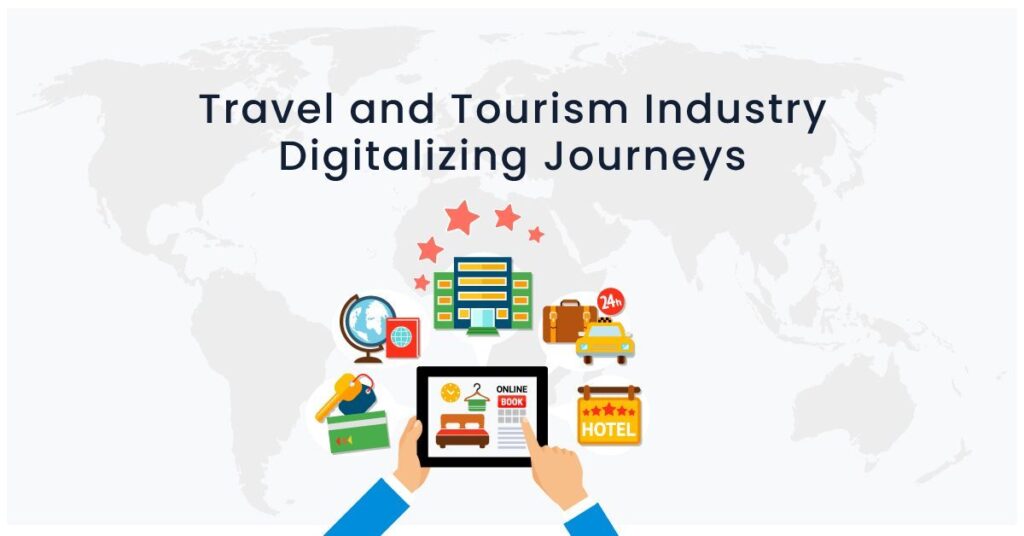
It’s a fact that the pandemic completely stalled the world travel and tourism industry at one point. However, if you look back now, when the impact of the virus is subsiding, people are getting used to living with it, the temporary setback offered more than it took to the travel industry, especially airlines across the world. The experience made the travel industry realize the importance of digitalization and modern tech to facilitate journeys. Today, airlines worldwide are promoting contactless journeys because it’s imperative for the industry to bring back the lost confidence in the passenger. “Every CEO that I speak to agrees about accelerating digital strategies,” – MD, Travel and Transport, IBM. While passengers today expect a more seamless travel experience from the airlines. In a survey, IATA recorded 10,408 passengers’ responses from 145 countries. And the insights were astonishing in terms of what passengers expect from the fliers. As many as 65% of respondents were willing to share personal data for expedited security checks. About 70% of passengers favored self-service baggage check-ins. Also, the survey showed the passengers wanted real-time information throughout their journey, 82% wanted real-time flight status on their phone, and about half of the respondents favored getting the real-time status of their baggage. Therefore, the World Travel and Tourism industry is willing to digitize journeys, and the expectations from the travelers are also in public. Then, let’s have a deeper look at what the industry is doing to bring technology into travel. Five Ways World Travel and Tourism Industry Enabling Seamless Travel Through Digitalization The world travel and tourism industry is gradually reeling from the bumps of the pandemic. And navigating through the realities of the day is not easy – the “new normal” is new for the travel industry as well. There’s no precedent for taking reference from and dealing with it. That said, modern technologies are helping the travel industry a big way to get the ball rolling again. So, now, we look at five major ways world travel and the tourism industry, particularly airlines, deploy modern tech to ensure efficient and safe journeys. #1 Increased Passenger Experience with Virtual and Augmented Reality The likes of Air New Zealand and Pratt & Whitney are pumping massive money into AR/VR systems to provide a better in-flight experience to passengers. Air New Zealand partnered with Microsoft Hololens to identify passenger mood and similar details. The information helps cabin crew offer more personalized offerings to traveling passengers. On the other hand, some carriers are also offering in-flight virtual tours before arrival. And using VR for cabin crew training. Recommended: Five Emerging Technology Trends in Travel Industry #2 Efficient Security Checks with Artificial Intelligence Against the backdrop of more stringent rules and covid protocols, airports are using AI to speed up security check operations and offer passengers a better traveling experience. Not just the carriers, governments worldwide are also investing heavily in AI security systems. In the previous financial year, the UK government pumped 1.8 million Euros to build new AI security systems, which bolster security and reduce passengers’ wait time. #3 Internet of Things for Improved Airport Experience The airlines are now gradually understanding the customer experience is the primary variable that gives them a competitive advantage. And at a time when the travel industry is on the path of recovery from the chaos of the pandemic, it becomes more critical. Airlines are now increasingly employing beacon technology for better to and fro communication from carrier to flier. The beacon technology assists passengers throughout their time at the airport, from providing nearby promotional offers, the status of security check, updated time of departure to minor things like informing the passenger of the correct gate number. #4 Passenger Assistance with Robotics Airports are using robots to fill the gap between human assistance and digital solutions. One such example is Indianapolis International Airport, which in partnership with Double Robotics, offers a “web-cam on wheels” for special ability passengers. The camera directly connects to the human assistant through a video link to resolve passenger challenges. Fliers are also using robots as “dynamic environment analyzers.” Indira Gandhi International Airport, New Delhi, uses a robotic technology called RADA by Tata labs to disseminate information like departure gates, weather at the destination, and flight status by simple boarding pass scan. Recommended: Is Bliesure the Future of Post Pandemic Business Travel? #5 Personalised Customer Offerings with Wearables and IoT Along with the demand for a seamless travel experience, customer expectations are also evolving. With an increasing number of customers who use wearables and are connected by IoT, fliers can use data to offer more centralized and personalized offerings to passengers. Some airports are already using IoT to push luggage information to passenger’s smartphones. As mentioned earlier, most passengers today are willing to trade personal data for getting seamless travel experience. Modern technologies are playing a significant role in bringing back passengers’ confidence, severely hit by the pandemic, and following protocols. And with the digitalization of journeys, the world travel and tourism industry looks poised for a strong recovery.
What is loyalty SAAS solution | Know different vendors in the travel market

In the post-Covid world, when travel brands are struggling to reclaim their brand identity and retain their old clients & customers – it’s the best time to use customer loyalty to your advantage. Loyalty SaaS solutions help you do it effectively. Emotion accounts for nearly half of a brand’s energy, says Forrester’s CX index research. It’s the emotions that fuel brand energy most, along with salience and suitability. Therefore, emotion is the predominant factor that drives loyalty among consumers. During the upheaval of the pandemic, almost all the travel brands witnessed significant erosion of brand loyalty. Now, when economic activity worldwide is slowly gaining momentum, even the travel brands that had a substantial customer base during pre-pandemic days are struggling to get any sizeable traction. So, how do travel brands appeal to the emotions of consumers to win back old loyalists and make new ones? The introduction of Loyalty solutions to manage consumer relationships at this juncture could prove to be a game-changer. Then, how to implement loyalty solutions? Here comes the SaaS model in the picture. Let’s discuss! What Is a Loyalty SaaS Solution? A loyalty SaaS solution is web-based software that helps you create, customize, and roll out loyalty programs. The software also offers you analytical insights, you can always measure the effectiveness of your loyalty program, and if required, you can make the necessary changes. And repurpose or relaunch your customer loyalty campaign. When you talk about the employability of these loyalty management solutions, you don’t certainly shoot in the air. The solutions help you gather data on repeat customers and hot prospects. Managing loyalty is nothing but establishing an emotional connection with your existing customers and prospects, as illustrated at the start of this article. The loyalty SaaS solutions help you build that emotional connection with your clients and customers by extending that extra value through rewards, discounts, coupons, etc. And in return, you get higher retention, repeat sales, and increased customer lifetime value. Now that we are clear about what loyalty SaaS solutions can achieve for you. Let’s look at leading loyalty management software for the travel industry. Recommended: How does a conversational AI Chatbot work? Use cases in Travel Top Seven Loyalty Management Software for Travel Industry In the broad market of loyalty SaaS solutions, we find the following loyalty management programs suitable for the travel industry because these are the few software that give more weightage to integration and recognizing customer journeys. 1. Loopy Loyalty Loopy loyalty helps you boost consumer loyalty by introducing digital stamp cards. You can create and customize digital stamps aligning with your business theme and color. Loopy provides a dedicated platform to send these stamps directly to the customer’s smartphone. Also, the value you provide with these stamps is not notional, their bundle includes an app, “digital stamper,” that allows you to send rewards along with digital stamps. 2. Annex Cloud Annex Cloud is one of the most comprehensive loyalty SaaS solutions in the industry. The tool enables you to reward customers throughout their customer journey. Annex cloud’s loyalty solution focuses on experience-based reward delivery, so your customers never feel disconnected from your brand. With Annex’s loyalty tool, you can reward customers for every action in the customer cycle, not limited to only purchases. It could be a review, a social share, an endorsement, an affiliate mention and many such activities. 3. Kangaroo Rewards Kangaroo Rewards is a great loyalty management software for creating digital loyalty programs. The software allows you to add unlimited members to a campaign. It also offers social media integration with a tool to fetch reports and performance insights. 4. Hashtag Loyalty The hashtag is a hybrid loyalty management software specially designed for travel businesses. The software includes customer tracking, referral, and first-party data collection modules. 5. Comarch Loyalty Comarch loyalty is an excellent Loyalty SaaS solution for SMEs, startups, and travel agencies as it offers incredible customer personalization features at highly competitive prices. 6. Olark Olark is one of the rare customer loyalty management software available on all platforms, including Windows, Mac, iOS, and android. Enables administrators to manage loyalty programs easily. 7. Capillary Capillary is an all-in-one loyalty management software for the travel industry. It provides quality customer and survey management features and has an integrated CRM (Customer Relationship Management) tool. Recommended: What is hotel upsell software? And how to choose one? After the jolt of the pandemic, business-to-business travel businesses need to re-establish communication with their old clients and customers. And find touchpoints to reward new customers. Implementing Loyalty SaaS solutions is an excellent way to win loyalty in a quick time. You can use the information in this piece to make an informed decision and select the right loyalty management solution for your travel business.
API In Modern Travel Technology
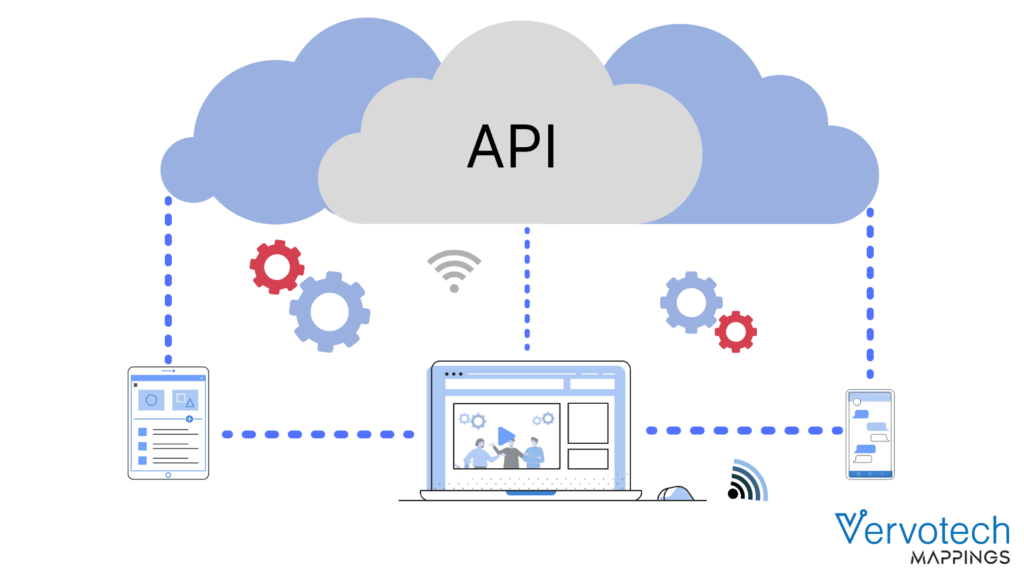
The advent of the internet and the resulting boom of social media has impacted our daily lives in ways we cannot even comprehend – long gone are the days when people needed to queue up in long lines waiting for their chance at availing themselves any service, they can now simply book it off the internet. The various advantages and quality of life upgrades that the internet has brought about has successfully managed to push us into the digital era, an era where the entire world is seamlessly connected. Therefore, the most valuable resource in present times is perhaps information, the control of which provides entities with certain advantages that cannot be matched by any other source. Making this said information available to potential customers as efficiently and as accurately as possible to enhance their experience in any given platform and provide them with certain value-added benefits ensures greater profits and a certain competitive advantage. As a result, there are now various technology companies trying to make this process as efficient as possible. According to a study by FuelTravel, customers make 20 to 30 website visits on average when availing of any service in the travel and hospitality industry. However, the study also showed that out of those 30 website visits, only 4.4 visits were unique. This shows that customers prefer availing all of their services from a single source if possible, through an ‘all-in-one platform’ as it provides maximum efficiency. Keeping this in mind, the key industry players have already started sharing and collaborating in terms of content not only to enhance the overall experience of their intended target market but also to increase their reach to other potential markets. This has resulted in an environment where more and more companies are now sharing data more openly to reap the benefits of a more connected system and make their products and services available to a greater number of audiences. What is API? The term ‘API’ is becoming extremely relevant in the modern scenario of technology firms and business owners must understand the exact meaning of this term to incorporate the same into their products and services. API, or Application Programming Interface, allows different companies to link software components without tweaking the source code. In other words, APIs allow connecting different data streams so that products can share certain features or functionalities. Going back to the results of the data, customers tend to book all their required services from one single platform since it provides them with maximum efficiency. Now consider a customer trying to book a hotel and then a cab service to that hotel – does the hotel provider provide cab services in addition to their basic service or does it make more sense to link another company that provides a cab service directly into their booking website so that the customers can directly avail that service? This is essentially the problem statement that Uber was trying to solve in 2014 when they made their ‘Request a Ride’ function available to other companies to integrate into their systems. With this simple integration, customers could book an Uber from any other platform that had the service integrated thus providing both companies with an added advantage over their competitors that did not have such integration. Fast forward to 2021, Uber’s revolutionary new feature has more or less become a staple across all related platforms. Now that we have a better understanding of API and the ways it can enhance modern businesses, let’s look at some of the advantages that API provides and the ways modern businesses are implementing it to their advantage. Advantages of API In addition to the enhanced customer experience, one of the biggest advantages of integrating APIs into an existing system is the significant reduction of costs when compared to alternative solutions. Companies can take advantage of various APIs without major changes to their existing platform thus allowing them to scale their businesses effectively. Following are some of the advantages that APIs can provide businesses in a modern context: Automation: By integrating various APIs, it is possible for a company to entirely automate most of their processes. This significantly reduces the manpower required to carry out the various processes of the company thus reducing overall operating costs. Application: APIs can be integrated into various ways depending on the needs and the requirements of the company thus making the delivery of services and the scope of the company more flexible. Scope: As discussed earlier, integration of various APIs can significantly increase the scope of any given business by making more services available to the end-user thus enhancing their experience. Information: The modern business scenario is driven by information. By integrating various APIs into one’s system, it is possible for them to intrusively gather data from various sources accurately and without discrepancies. This allows for smoother operation and better decision-making in the long run. Efficiency: To continuously improve one’s services, one needs to be extremely efficient when it comes to the delivery of their services. APIs, by automating various systems, can make the entire process more efficient thus driving customer experience. Integration: APIs allow for embedding content from various sources thus ensuring fluid content delivery and an integrated user experience. Personalization: It is essential that the products and services that are offered by companies are personalized according to the needs and wants of the target market. By integrating various APIs into the existing mix, a company can provide an extremely intuitive and personalized experience for their customers. Adaptation: When addressing the various needs and wants of any given target market, it is also essential to keep in mind the various trends that drive customer choice and need. Therefore, the needs and wants of any given target group will change over time and orienting the various products and services of a company according to the same can be a very tedious task. APIs can help a business make such changes quickly and without risks by allowing content from various sources to be integrated into their existing thus allowing the
What Is Global Distribution System in Hotel Industry, Anyway?
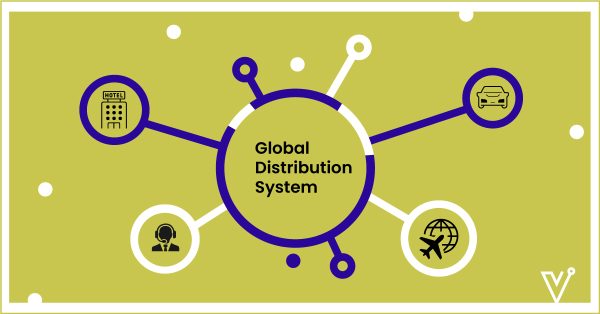
The idea of a global distribution system evolved from the highly cumbersome and inefficient booking system the travel industry was following. Until, 1960 if a travel agent had to make a reservation for a flight, he needed to call an airline, and airline staff would take hours to shuffle through documents and find if there was space available for a particular route and time. While the demand for air travel was growing, some airlines developed their own booking system. American Airlines was the first in the batch. The airline partnered with IBM and developed Automated Business Research Environment (SABRE) technology. The technology helped the airline widen its access to more travel agents, which ultimately translated into more customers. Soon enough, other lines also followed suit, the likes of British Airways and Delta also started using the electronic booking system. In 1970, The Westin became the first hotel to have an electronic reservation system called Westron. But the reservation system was not open for travel agents or agencies, and only hotel employees could use it. Then 1976 came as a watershed moment for the Global Distribution System in Hotel Industry when a travel agency got access to SABRE. By the end of 1985, about 10,000 travel agencies were using SABRE. Eventually, in 1992, an owner of America based reservation system joined hands with the European system to build the world’s first Global Distribution System. How does Global Distribution System in Hotel Industry Work? Global Distribution system works as an intermediary dealer between a travel agent and a hotel’s (or airline’s) online reservation system. A GDS does not have its own inventory, and it directly uses the hotel’s data to make changes. It allows travel agents to fetch real-time prices and inventory for a particular hotel. A Global Distribution System in Hotel Industry simply enables travel agents to look through the hotel’s system and gather important information like available room types, prices, and restrictions. Unlike the 60s, now, if a travel agent books a room, the GDS automatically removes the room from the hotel’s system. A travel agent no longer needs to check with hotel staff, and hotel staff no longer need to flip through documents to find if a room is available in their hotel. That’s the change GDS brought in the hotel reservation ecosystem. Today, Global Distribution System in Hotel Industry is widely used to tap the corporate customers. The Benefits of Using Global Distribution System in the Hotel Industry The primary goal of the Global Distribution System in the Hotel Industry is to help travel agents/agencies find hotel rooms that fit their requirements. It’s a B2B system that travel companies use to get real-time availability of rooms and other travel arrangements and make it available for their customers planning to travel. As a hotel, if you are not getting enough traction from travellers, signing up with a GDS can be a great idea. Let’s understand in slightly greater detail how the Global Distribution System in the Hotel Industry can help your hotel business. Increased Bookings through Travel Agents Many corporates even today rely on travel agents to make accommodation arrangements for their employees, rather than having someone in-house who manages travel arrangements. More than 60,000 active travel agents use the global distribution system to make bookings. Thus, signing up the GDS offer hotels a wide net of recurring customers. An Opportunity to Lean Hotel Staff Apart from the exposure that hotels get, Global Distribution System in the Hotel Industry also makes booking easier. The system has real-time access to the hotel’s booking system, and it instantly informs the hotel once an agent books accommodation. It removes that entry from the hotel’s room inventory. So, it frees up a lot of hotel administrative staff, creating a positive-sum game for the hotels. A hotel can use this opportunity to lean their staff or deploy them to a place where they can create more value. Recommended: Top Hotel Mapping Tools Leading the Market in 2022 A Less Expensive Alternative to Marketing However, hotels have to pay a joining fee to set up an account with a hotel distribution system, but it’s much cheaper than what a hotel chain may have to pay for marketing to up their booking numbers. Also, as mentioned previously, with GDS, you get many corporate recurring customers. That’s an added advantage. From agents having to call the hotel staff to directly making bookings, things have dramatically changed ever since the emergence of the Global Distribution System in the Hotel Industry. The system continues to be relevant, offering information, value and profits to both agents and hotels.
Mice for hoteliers: Four ways to attract mice tourists
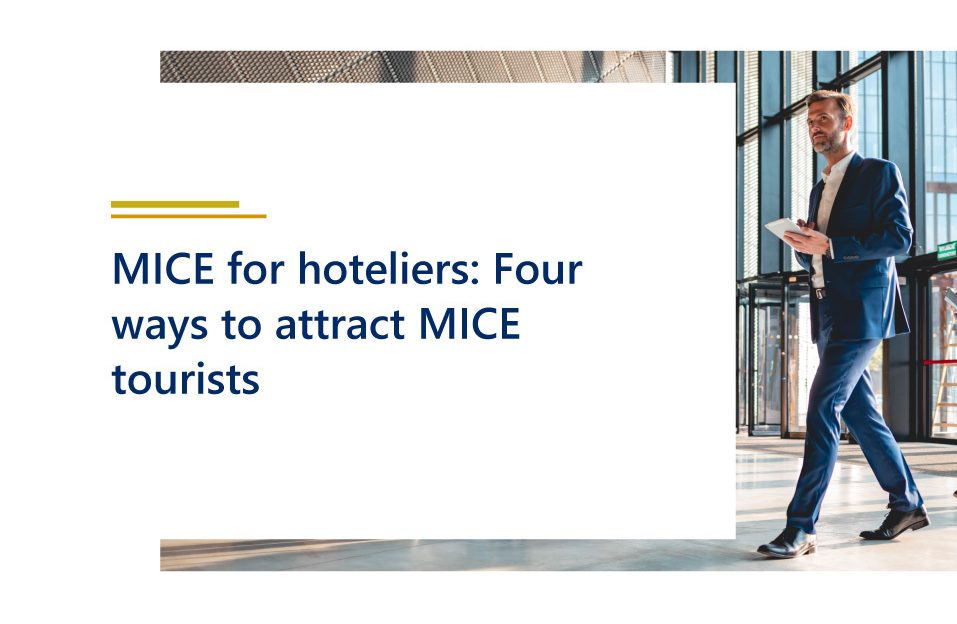
Meetings, Incentives, Conferences, and Events – This is a MICE full form in hotel industry, and as a hotelier, you are very much accustomed to this abbreviation too. MICE tourism constitutes an important part of business travel, and the market is growing rapidly at a CAGR of 21 and is expected to hit a valuation of 1337.4 billion USD by 2028. Therefore, it’s a massive opportunity for all hotel businesses. While attracting quality MICE tourists is still a demanding task. You would already be nurturing your leads from your hotel CRM. But are you identifying your market accurately? Are you keeping pace with the changing demands of MICE tourists? If the answer is no and you are still trying to figure it out, we got you covered. Here, in this blog post, we recommend four ways to attract quality MICE tourists, which will maximize your revenues and capitalize on the opportunity we mentioned at the start of this article. But before we get there, let’s first evaluate the increasing Importance of MICE for accommodation businesses. Why does MICE matter more now? MICE, as an ancillary revenue source, is not new. It has been there for decades. So, you would think, why put extra weight on MICE now? What is new there? The fact that MICE matter more now is because there is a tectonic shift in how business travelers look at MICE tourism. MICE is becoming a cultural need of businesses. Everybody wants to network and cash in on the opportunities that networks bring. So, it creates a balanced win-win situation for both hoteliers and corporate firms. Therefore, if you want to double down your MICE business, it is the best time. As we mentioned earlier, the market is growing at a CAGR of 21%. And the growth is ubiquitous. Earlier, only North America was leading the charge, but now Europe Is also increasing spending on MICE tourism. So, the opportunity is enormous. But to make it count, you must ensure that your offerings match your customers’ expectations. And your services are tailored to the demands of tourists. Once these variables are in place, you will be fine on the demand side. Global Mice Market Report, 2022-28, shows that as many as 85% of US meetings are happening at hotels and lodging venues. And as established earlier, the trend is the same across the globe. Four smart ways to attract MICE Tourists So far, in this article, we have looked at the demand side—the increasing Importance of mice for hoteliers. Now we head on to address the elephant in the room, which is attracting, right, high-paying MICE tourists. There are many marketing strategies that you can use to attract these tourists, but we’ll make it short for you. And breakdown into four parts. 1. Define your market by identifying your strengths You can only sell a proposition once you have a market in sight. All businesses have some competitive edges, and you will have yours. Define your market by highlighting the category of clients more likely to buy the value proposition you have to offer; it could be your strategic location, the customizable space you have, or any other unique feature of your properties that give you a competitive advantage over others. 2. Allocate more resources to promising markets After the primary differentiation of the market, you now must look at the countries where the popularity of MICE tourism is growing. Adjust your digital ad budgets and allocate more resources to those promising markets. For example, now, MICE tourism is on the rise in Europe. So, your marketing spending should be the highest in European countries. In short, your marketing spending in any location should be proportionate to the demands coming from those locations. 3. Create a unique sales space for MICE tourists Once you sell a unique value proposition, the customers expect a unique experience. They want to know how serious you are about your services. It would be best if you could create a separate website for your MICE customers. If not, create a neat and clean landing page where all your unique propositions are clearly mentioned. Also, position yourself as a business that prefers MICE tourists. 4. Nurture relationships to get return customers MICE is an ongoing activity, so if you can cheer your customer on their first visit. And make them feel warm and welcome. They will likely come back to you as returning customers and spread word of mouth. Even if it costs you a few bucks more – keep your customers satisfied. Because businesses also don’t want many experiments, they want to go to the places they are familiar with. So, try to create an experience that they want to have again. Recommended: Blue ocean strategy for the hotel industry: A way to carve out new market Wrapping Up! To summarize, we looked at the prospects of the MICE market, which are excellent. We also looked at the rate and trends to set expectations right for what you can expect from the market worldwide. Then we talked about the enormity of the opportunity and discussed strategies on how you can make use of this opportunity by attracting quality customers and earning recurring revenues. All our recommendations are easily implementable, so make the best use of them.


